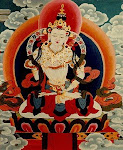


03 May 10
Kaibigan,
It is fairly safe to state that a sophisticated standard of performance has been set in the Folkloric Dance World—from Belarus to Bayanihan.
For the modern audience, the presentation of folk dances has evolved from a mere spectator sport to a venue for discourse that has raised anthropological concerns and spawned aesthetic challenges.
Serious folk dance companies have stepped up their game and are interested in discovering authenticity (with a clear intention of presenting the dances in the context of the culture where it forms part), as well as honing dance skills and improving repertory.
With regard to ancient forms, it is common practice for these dance companies to set-up dance schools in order to codify the dance vocabulary and to ensure that skills are handed down in perpetuity. In many communities in the south of the Philippines, training in the Pangalay dance tradition begins as early as 6 years old in the same way that the west has ballet classes for kids. Dance vocabulary is very important in these traditions. The correct and exact positioning of the fingers and thumb, in relation to the hands, the angle of the head in relation to the focus of the eyes, among others, are all important in the same way that the Russians place importance in the naming and proper execution of arms and leg positions in classical ballet.
To me, the works of the Bayanihan Philippine Dance Company and the Ramon Obusan Folkloric Group, as well as individual teachers like Ms. Ligaya Amilbangsa are prime examples of how folk dance have been used to serve anthropological research, heritage conservation and dance aesthetics. Their programs feature distillation of researched indigenous dances and presented with clear demarcations of a beginning, rising action, climax and denouement. They feature dancers who have received extensive training, possess above average dancing skills, and who can dance well individually as well as one body or a dance corp.
The performances of these groups enthrall because they feature colorful and authentic attire and skillfull dancing and music making. Moreover, the dances are staged to engage the mind to imagine and empathize with a culture not of one’s own. With no words and not much of a plot, the audience gets captivated in the magical way in which dance communicates through feeling.
The recent show of Pandibulan by the Kinding Sindaw at the La Mama etc. shows a digression from this tradition as it explores folk dance forms as dance drama. As led by Potri Ranka Manis, this dance theatre company, as the program notes reveal, “envisions that through the use of the ancient art forms[,] the virtue and teachings of the ancestors will be able to guide the present and future generations.”
The Pandibulan features a program of Yakan dances centering on the pangalay dance tradition as found mainly in Basilan, south of the Philippines.
Pangalay (also known as Daling-Daling or Mengalai in Sabah) in is the traditional “fingernail” dance of the Tausūg people of the Sulu Archipelago and Sabah.[1] This dance is the most distinctively Asian of all the Southern Philippine dances because dancers must have dexterity and flexibility of the shoulders, elbows, and wrists[2] – movements that strongly resemble those of “kontaw silat,” a martial art common in the Malay Archipelago. The Pangalay is performed mainly during weddings or other festive events[1]. The male equivalent of the Pangalay is the Pangasik and features more martial movements, while a pangalay that features both a male and female dancer is called Pangiluk.
The original concept of the Pangalay is based on the pre-Islamic Buddhist concept of male and female celestial angels (Sanskrit: Vidhyadhari, Bahasa Sūg: Biddadari) common as characters in other Southeast Asian dances.
Neighboring Samal and Bajau peoples call this type of dance, Umaral or Igal, and they sometimes use bamboo castanets as substitutes for long fingernails.[2]
A modern variant of this dance popular among the peoples of Mindanao, Sulu and Sabah is called Pakiring, and emphasizes movement of the hips (kiring-kiring) more than the traditional dance. It is performed to electro versions of traditional songs and is fast overtaking the traditional Pangalay in popularity at weddings.
(http://en.wikipedia.org/wiki/Pangalay)
According to a renowned researcher-teacher, the pangalay tradition has an extensive dance vocabulary that surpasses even that of classical ballet.
The Pandibulan, as conceptualized, choreographed and directed by Ms. Manis incorporates a few of the pangalay vocabulary into telling the story of a Yakan woman undergoing an interview as a caregiver in the US and is stereotyped by a white employer as being an un-complaining and submissive worker from the Third World. The story flashes back to the Yakan community where the woman is from. We are introduced to the community through a series of dances that cover the universal rituals of marriage, childbirth and death. The program also includes dance iterations of the eclipse folk tale as adapted from Yakan oral tradition and a chanting, the contents of which are not properly explained.
The night I watched, the female dancers, clad in colorful, often iridescent costumes, were a delight to watch. However, their dancing was uneven and may need more polishing specially in the parts that required unison. The male dancers were not up to par. Their dancing lacked tension. Their hand and arm placements were fuzzy and uncontrolled. One dancer failed to pick-up his spear from the ground after a plain somersault in a dance demonstrating skill.
But even if the dramaturgy lacked clarity and cohesiveness, the audience seemed to enjoy the evening. After the show, a horde of fans joined the dancers on stage for souvenir photos.



No comments:
Post a Comment